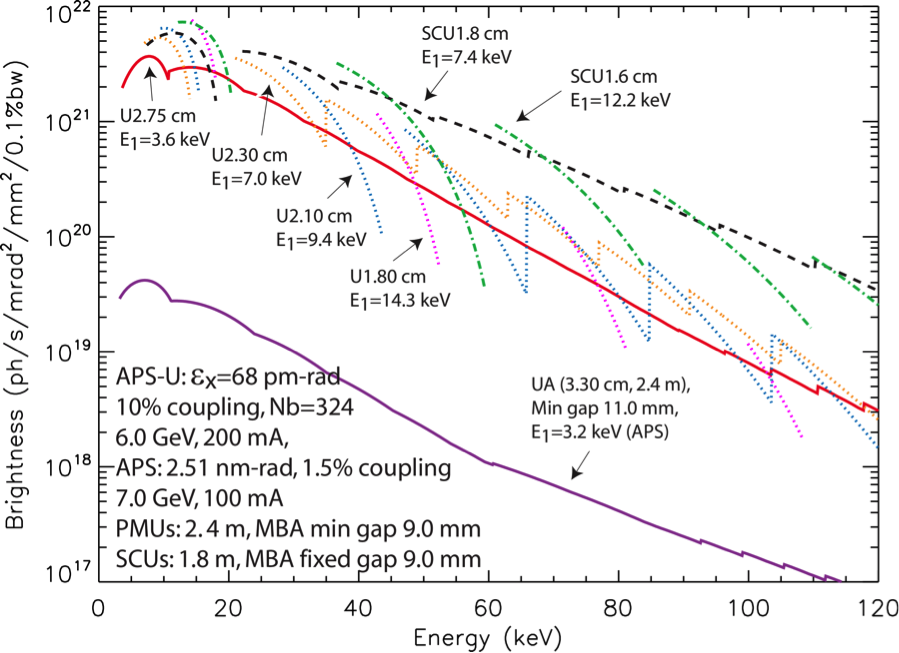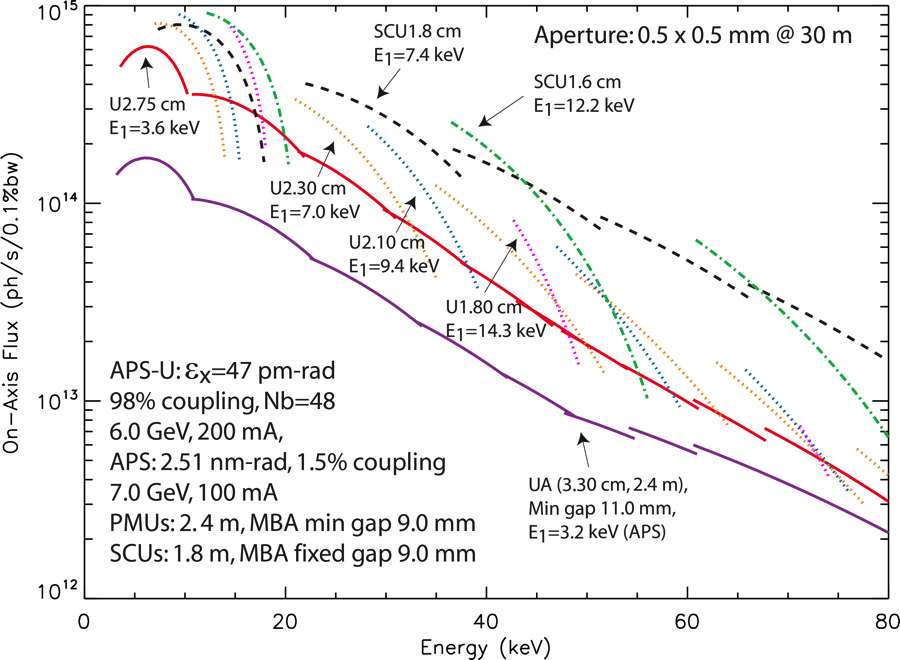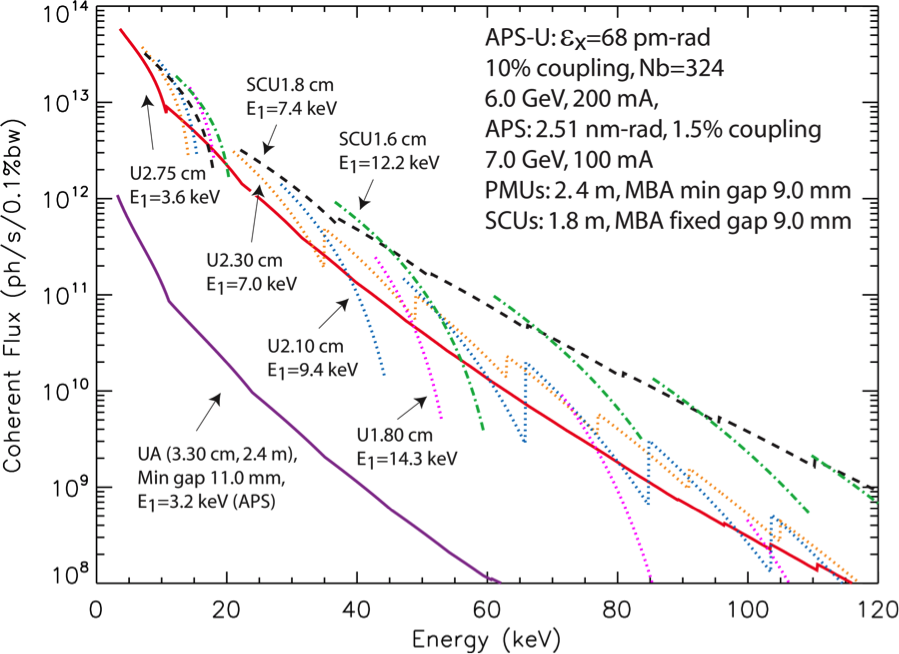|
All straight sections are 4.8 m long and all of them can accommodate insertion devices (IDs) up to this length. A typical undulator is 2.4 m long (half the length of the straight section). For Permanent Magnet Undulators (PMUs) the magnetic length is assumed to be 2.4 m and for the Superconducting Undulators (SCUs) it is 1.8 m. (The cryostat is 2.4 m long and the transitions occupy 0.6 m). If a straight section is canted, the maximum length of the insertion devices will be reduced to 2.1 m for the PMUs. Similarly, the length of the SCUs will be reduced to about 2.1 m (1.5 m magnetic length). It is also possible to provide two IDs in tandem to utilize the full length of the straight section. The devices may be phase tuned at a fixed energy or phase tuned using an active phase shifter between them in which case their lengths will be reduced slightly. Figures 1 – 3 show the brightness, flux, and coherent flux tuning curves of odd harmonics for some of the possible IDs for the APS Upgrade. These are examples of typical planar IDs. Reduction of higher harmonics due to magnetic field errors was applied to all tuning curves. The reduction factors were numerically obtained from quantities computed directly from measured magnetic fields and from ideal sinusoidal magnetic fields. These are estimates only but reasonably good. (The provided data files for the aperture flux do not contain the effect of the reduction factors. The plot program applied those when generating the figure.) Other IDs, for example, IDs providing variable polarization such as the APPLE-II type undulators, or IDs providing helical polarization such as the helical SCUs, or IDs with vertical polarization using the horizontal gap vertically polarizing undulator (HGVPU) concept developed at the APS are possible but need further investigations. Requests for technical information should be sent to Dean Haeffner ([email protected]). |
| Listed below are the data files used for the plots shown above: |
|



